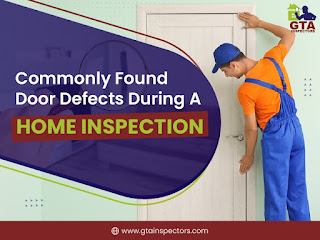The Ins and Outs of a 4-point property inspection
It is the dilemma of buying a new property. This is a common observation that first-time property buyers make. Property buyers have many preferences and doubts that are deeply rooted in their hearts. The real estate market has service providers such as agents and brokers who can help buyers narrow down their search and find the right property.
What about the property's condition? Can real estate agents guide you well? Can they provide accurate results? These are all valid questions. Based on their experience, real estate agents may give an overview. You want accurate and clear information. You can contact a certified property snagging company that is enriched with qualified and experienced professionals who are well-versed on property analysis.
With the assistance of experienced property inspectors, a property inspection firm will conduct a thorough inspection and report on the property's condition.
For first-timers, most people go in for a 4-point inspection. What is a 4-point inspection? Let's explore the differences between a full house inspection and a 4-point inspection. The inspection of a property is done in four points.
The roof inspection is the most extensive part of a 4-point inspection. It involves checking for signs of deterioration and leakage as well as sizing and shaping the roofs. This is important because it not only impacts the structure of the property but also affects energy efficiency, mold accumulation, and mold growth.
The electrical aspect is the examination of electrification (i.e. the wiring in the house). Property with copper, knob-and tube and aluminium wiring is more at risk of fire. Property inspectors also check whether the electrical outlets have been properly grounded.
Are the pipes made of polybutylene? The plumbing inspection covers the checking of the pipes to determine if they are in good condition or if there are leaks. A qualified professional snagging inspector will evaluate the materials and age of all the drains and supply lines throughout your house.
The last aspect, HVAC- refers primarily to the inspection of the heating, ventilation, and air conditioning systems in the house and all the pros and cons.
We can clearly say that a 4-point inspection is different from a complete property inspection. A four-point inspection focuses on the systems, electrical, plumbing and roofing. A four-point inspection is required when the property you're looking to purchase or where you live has been in use for more than 30 years. A complete property inspection is, as its name implies, an examination of all aspects of the property, including the plumbing, roofing, electrical, and drainage systems.
The homeowner's choice of whether to have a four-point or comprehensive inspection is up to them. The property's age will determine whether it needs a complete inspection. However, an owner who is considering moving into a well-aged property should have a complete inspection.
But, what good is a bubble of doubt? We can help you get real evaluations and burst any doubts. GTA Inspectors is the best snagging company dubai that will help you dispel all myths, get real advice about the property's condition, and ultimately make a better decision.


.png)
.jpg)
Comments
Post a Comment